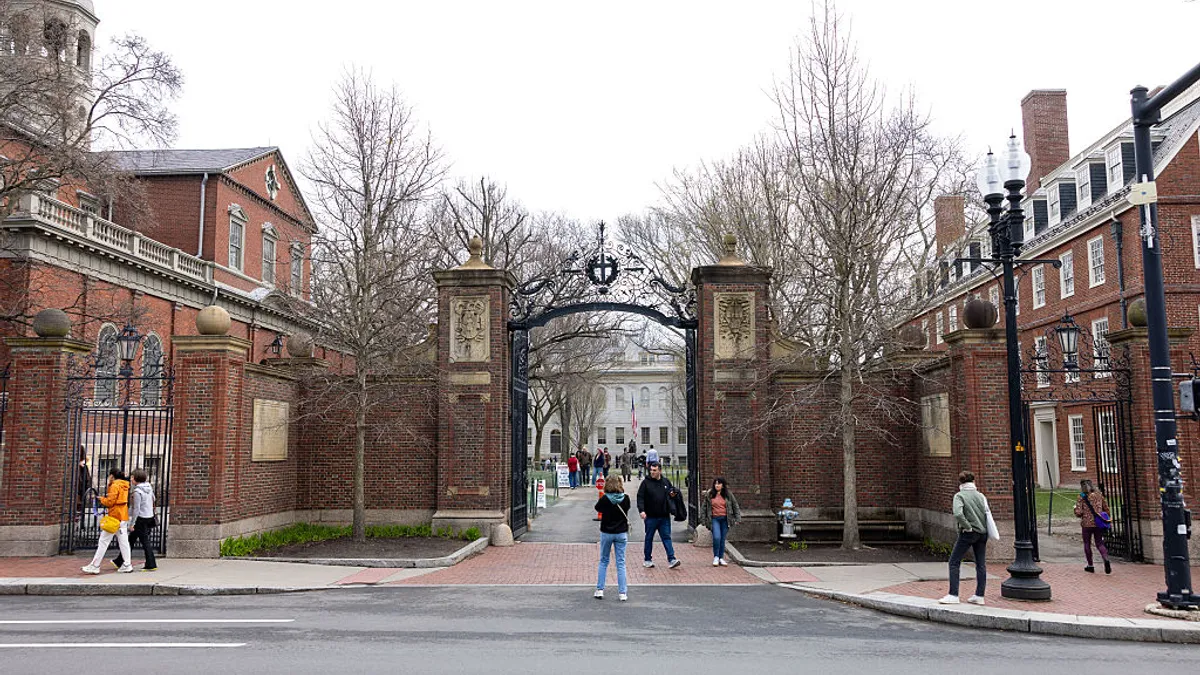Six students at Florida A&M University sued the state and its public university system's leaders Thursday, alleging Florida discriminated against the historically Black institution by underfunding it and keeping it from becoming the peer of traditionally White universities.
The lawsuit, which seeks class-action status in federal court, says the state violated civil rights law and the Constitution's equal protection clause with its funding and academic decisions. It seeks to force Florida to put the HBCU on the level of the state's White institutions within five years.
"Throughout its history, Florida has systematically engaged in policies and practices that established and perpetuated, and continue to perpetuate, a racially segregated system of higher education," the lawsuit alleges.
Students filed the lawsuit less than a month after Florida A&M football players grabbed national headlines by weighing the idea of not playing in their season-opening game, for which 26 players were deemed ineligible. The team penned a letter alleging issues with financial aid arriving on time, inadequate academic support staffing, problems with summer class availability and advising issues contributed to the ineligibilities.
But the case could echo far beyond Florida's borders. It comes after persistent funding gaps have been documented at HBCUs in other states. And the Florida lawsuit makes one argument that mirrors a recently resolved lawsuit HBCU backers fought against Maryland: that the state damaged the HBCU by allowing duplicative programs at predominantly White institutions.
Last year, a federal judge approved a settlement giving Maryland's four HBCUs $577 million over 10 years.
Allegations against Florida
Florida A&M opened in 1887 as a normal college for Black students — after the state was required to provide equal educational opportunities for Black students in order to qualify for federal land-grant funding. Today, it enrolls about 9,000 students, making it one of the country's largest HBCUs. It's one of two land-grant institutions in the state, along with the University of Florida.
In 1970, the U.S. Department of Education told the state it was violating federal law by running a racially segregated higher ed system, the lawsuit says. Eight years later, it accepted an improvement plan from the state that included more money, improved facilities and stronger academics at Florida A&M.
To boost the university's academics, the state was supposed to address unnecessary duplication of programs between Florida A&M and nearby traditionally White institutions, including by eliminating programs or creating joint programs.
In 2003, the state told the federal government it had complied with the agreement. But the lawsuit says the state duplicated Florida A&M's unique programs at traditionally White colleges between 1982 and today.
For example, Florida A&M and Florida State University, which are both located in Tallahassee, operate a joint engineering program. Students enroll in one of the institutions, then go to engineering-specific courses in a shared building after completing prerequisite courses.
The number of Florida A&M students in the program has been declining, while the number of Florida State students has been increasing, according to the lawsuit. The state also yanked the shared college's $13 million budget from Florida A&M in 2015 and placed it under Florida State's authority, it says.
"Unnecessary academic program duplication is harmful, socially and economically," the lawsuit says. "It harms the citizenry of the State of Florida, FAMU, its students, including Plaintiffs and the proposed Class, and the public at large because the duplication: wastes and dilutes limited State resources when programs already exist to meet the demand and thereby reduces the economic efficiencies of the higher education system."
It also perpetuates segregation and hurts Florida A&M's enrollment, the lawsuit argues.
The lawsuit also takes aim at a performance-based funding model Florida put in place in 2014. It awards some funding based upon metrics the state university system adopted, including four-year graduation rates and median wages of graduates a year after graduation.
That system "unfairly compares schools that serve student populations" from different socioeconomic backgrounds, the lawsuit says.
In 2018, the university was one of three institutions that didn't receive any of the funding awarded under the performance system.
The lawsuit goes on to compare funding for Florida A&M and the University of Florida. Florida A&M received $110 million in state appropriations in 2019, or $11,450 per student. The University of Florida received $785 million, or $14,984 per student.
Between 1987 and 2020, Florida A&M has received $1.3 billion less than the University of Florida, according to the law firm representing the students, Grant & Eisenhofer.
Graduation rates have been rising for Black students at Florida's public colleges, the lawsuit says. But even though the state has agreed to improve Black students' graduation rates, gaps between Black and White students are growing, not shrinking.
In 2018, Florida A&M's first-time, full-time four-year graduation rate was 21.6%, the lowest in the state university system. The University of Florida's was 67.3%. Two years later, Florida A&M's rate had improved by 6.1 percentage points, while the University of Florida's increased even more, by 7.4 percentage points.
The lawsuit also says the state effectively makes it harder for Florida A&M to build or update facilities.
Capital improvements take 10 years longer on average to complete at HBCUs than they do at traditionally White institutions, the lawsuit alleges.
"This is demonstrative of Defendants’ lack of good faith," it says.
The State University System of Florida does not comment on pending litigation, a spokesperson said in an email. A Florida A&M spokesperson said the same.
Is Maryland a roadmap, and could more HBCU lawsuits follow?
The Florida A&M lawsuit's claims of program duplication may bring to mind the case seeking more funding for Maryland HBCUs. But no one from the Maryland case is involved in the one in Florida, according to Barbara Hart, principal at Grant & Eisenhofer.
Hart hopes to resolve the Florida case more quickly than the one settled in Maryland last year. The Maryland HBCU case took 15 years to conclude. A federal judge wrote in 2013 that program duplication affected student choice, but the two sides remained stuck in mediation for years afterward.
The Florida A&M students' lawsuit has some strategic differences, Hart said. For example, Florida A&M is a single public land-grant university, which allows for funding comparisons with other land-grant institutions.
"There is an ability to really drill into what would be apples-to-apples funding," Hart said.
Hart also signaled an openness to taking up other similar cases.
"If students come to us and we're able to establish the concrete funding disparities we have been able to analyze and set forth here, we certainly want to be their allies," Hart said.





















